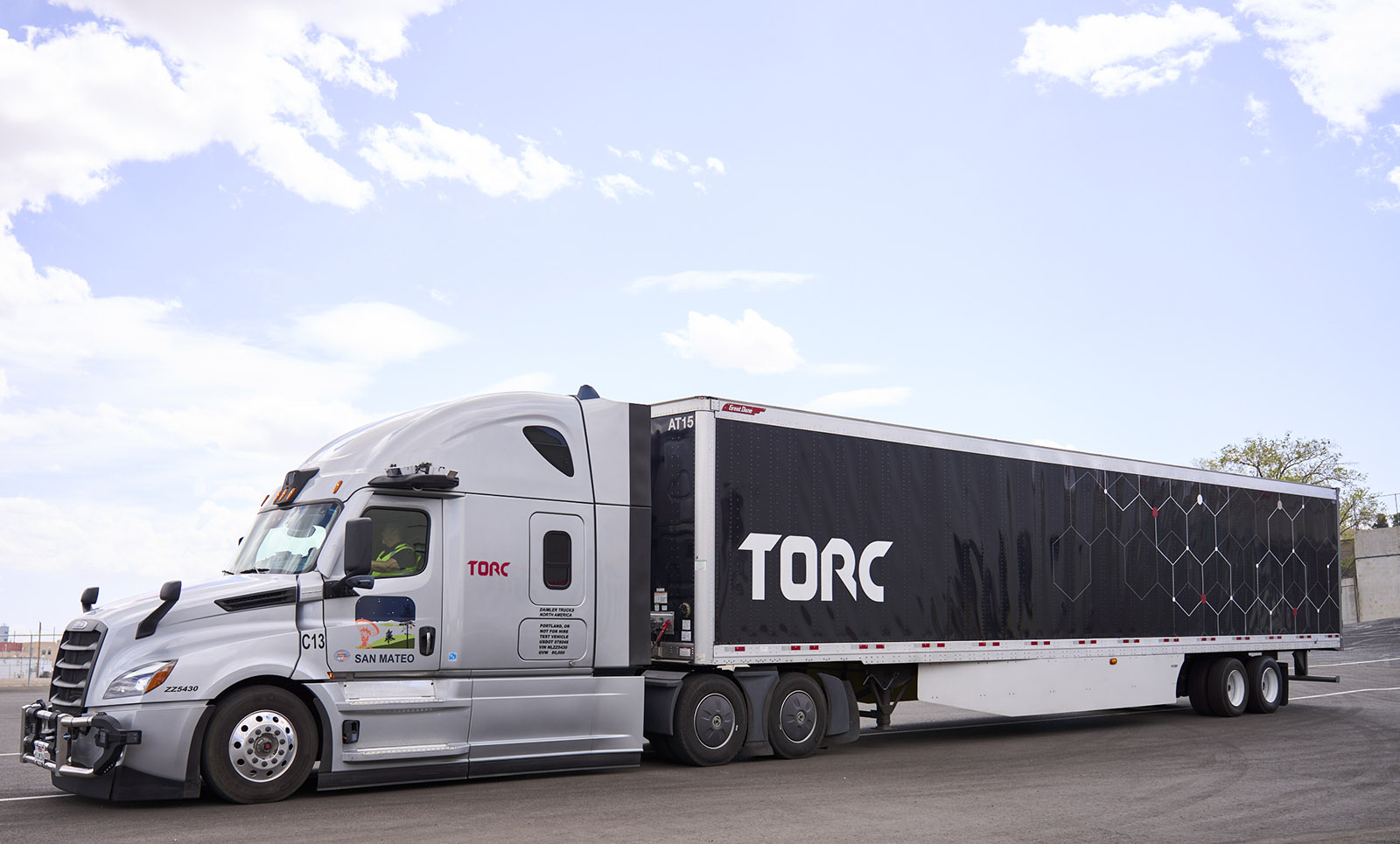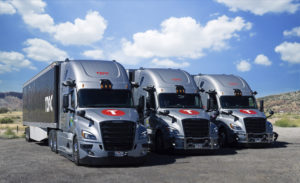At Torc, we get a lot of questions about our trucks. Whether we’re visiting our local high schools or answering questions via social media, it’s clear that there is a lot of curiosity (and trepidation) about autonomous semi-trucks – and self-driving technology itself. Because we’re passionate about bringing education to the forefront of the conversation about autonomy, we’re taking the plunge into some of our most frequently asked questions.
What are autonomous trucks, or automated semi-trucks?
An autonomous truck is a semi-truck that can deliver goods across the country without needing a driver. Like autonomous cars, these trucks are currently in development at several self-driving-technology companies – and they’re on the horizon with some truly amazing capabilities.
It’s important to remember that all driverless technology exists on a spectrum. Passenger cars and other vehicles with self-driving technology are all around us; you may even drive one yourself! If your car has cruise control, you have a car with self-driving functions – even more so if your car has lane-keep-assist features to help keep you between the lines.
However, at Torc, when we talk about autonomous semi-trucks, we’re talking about full self-driving capabilities. These commercial vehicles use a combination of hardware, software, artificial intelligence, machine learning, and more, to haul freight down highways without needing a driver at some point in the future. Because of their capabilities in speeding up shipping and increasing overall efficiency in the freight industry, many companies including Torc believe that self-driving semi-trucks will be the first commercially viable, autonomous vehicles to scale widely after their initial launch.
With this in mind, there are a few different business models for automated semi-trucks: hub-to-hub and platooning are some of the most popular.
In platooning, sometimes called convoy trucking, one truck follows another, and the lead truck is being driven by an engaged, CDL-licensed human driver. The secondary truck that follows also has a human driver, but that driver is off-duty. (The amount of time that truckers are allowed to drive per 24-hour -period are limited by “hours of service” regulations.) While the second driver sleeps and/or rests, automated trucking software, or a virtual driver, takes over. This virtual driver uses the truck in front of it as a signaler for many of its processes, including braking, accelerating, and even lane-changing.
At face value, platooning may seem like a good path for autonomous trucks, because a human is still involved/in the truck in case something unexpected happens. Secondarily, there are already federal laws set up around team driving; the platooning model just turns one of those team members into a robot.
However, there are some parts of this model that are potentially problematic. In the platooning model, unexpected variables are the enemy. If the follower truck deviates in any way from the lead truck’s behavior or characteristics, things can get dicey. For instance, different set of tires might mean that one truck takes more or less time to brake compared to its leader and vice versa. In the same vein, the trucks may be carrying different loads, meaning that the weight distribution will be vastly different between them, also affecting things like acceleration and braking time.
There’s also the insurance risk. While liability is a hot topic in all forms of self-driving technology, it’s significant in the platooning model. A technological failure in one of the platooning trucks may result in catastrophic damage to both vehicles, creating twice the damage compared to a single, solitary, self-driven vehicle.
And lastly, while there are federal laws surrounding team-based driving, individual state law varies on the platooning concept. Some states, like Arizona, Texas, and Utah, allow automated-follower platooning. However, many other states have “following too close” laws in place that may pose a barrier.
Now, let’s discuss hub-to-hub trucking automation. At Torc, we believe that the hub-to-hub model is the safest, most scalable form of autonomous trucking. We’ve built our business around this concept, as have many of our advisors, partners, and colleagues. From our freight pilot with Schneider to our collaboration with Daimler Truck North America, Torc has built our hub-to-hub model on the proven value of our partnerships.
So, what exactly is the hub-to-hub model? In this approach, human drivers haul semi-trailers on non-highway roads (think city streets and in-town roads, etc. where drivers encounter things like street lights, stop signs, pedestrian traffic, etc.). In the “first mile” of the hub model, human drivers pick up trailers from places like warehouses, depots, big-box stores and other locations to deliver to highway hubs. These highway hubs will act as “home base” for autonomous trucking, and would be built specifically to manage autonomous truck needs. Once that human driver drops off a trailer, an autonomous semi-truck will pick up that same trailer and haul it across “the middle mile:” those long stretches of interstate where over 8,500 trucks travel every day. The freight will be autonomously driven on interstates and highways to the next hub, where that trailer is picked up again by a human driver for in-town deliveries, or “the last mile.”
The hub-to-hub shipping concept isn’t new. Most postal and freight services use some form of hubs; you may have even seen them as stops along the route when you track a package online. Whether that’s a warehouse, an office, or a distribution center, many of our daily packages as consumers go to logistics centers where they can be organized and transported to their next stage of transit. As we bring this new technology into reality, we anticipate that autonomous 18-wheelers will integrate seamlessly within an existing shipping hub’s logistics systems and daily operations.
“The benefit of the hub-to-hub model largely lies in complexity and efficiency of the journey,” says Adam Shoemaker, Torc’s Chief Autonomy Architect. “The US highway system, while still highly variable, provides a reasonably structured environment which enables strategic breakdown and development of efficient and safe vehicle functionality. Similarly, the limited interactions of autonomous trucks with pedestrians, bicycles, and other unstructured use cases within a hub model give the product the flexibility to ensure safety without compromising efficiency and marketability.”
It’s also important to note that self-driving “last mile” delivery trucks can be autonomous, and fall within their own category of autonomous technology. Most autonomous trucking companies are focused on some form of long-haul (middle mile), wherein last-mile delivery is handled by smaller, dedicated robots: think aerial delivery drones and small ground-based robots.


